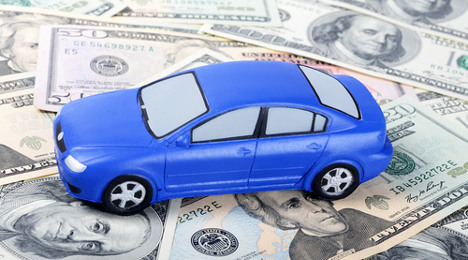Biggest factors at play in auto finance

Used-car buyers are shelling out close to 4-percent more money on their down payment than they were a year ago, according to data released Friday by Edmunds.
And their down payments — which averaged $2,529 in May — are more than 12 percent higher than five years ago.
Those numbers are even more pronounced on the new-car side, Edmunds said.
All this amid a new-car market where incentives, leasing and interest rates are on the rise, and a used-car market where steadily climbing off-lease supply is putting a bit of pressure on prices.
Down payments, monthly payments on rise
According to Edmunds, the average down payment for a new car was $3,801 last month, which is 6.5 percent higher than May 2012 and 15.3 percent higher than five years ago.
The average amount financed on a new-car purchase last month was up 1 percent at $30,314, which amounts to a 5-year change of 15.9 percent.
Monthly payments on new cars ($510) were up slightly year-over-year (1.2 percent), but have climbed 10.6 percent in five years, Edmunds said.
For used cars, monthly payments fell 0.2 percent from May 2016 (coming in at $385) but have jumped 4.1 percent in five years. Pre-owned car buyers are financing $21,310 on average, Edmunds said, which is down 0.9 percent from a year ago but up 11.3 percent from 2012.
“Buyers want pricier cars with more bells and whistles, leading to the troubling trend of trading longer loan terms for lower monthly payments,” Edmunds executive director of industry analysis Jessica Caldwell said in a news release.
“But now that interest rates are also on the rise, something has to give,” she said.
In fact, the average APR on a new car in May (5.0 percent) was a 12.7-percent hike from May 2016 and a 14.9-percent uptick from 2012. The used-car APR (7.63 percent) was up 4.5 percent year-over-year, but down 7.8 percent from five years ago.
“In our increasing credit-based culture where consumers are willing to finance everything from cellphones to vacations, more money up front shows car buyers aren’t completely sacrificing practicality in order to get the cars they really want,” Caldwell said.
And they may be getting some help from automakers.
Incentives of all stripes see increase
In a separate commentary provided to the media, Caldwell said there was a 33-percent year-over-year spike in finance incentives last month.
Lease incentives jumped 28 percent and cash incentives were up 18 percent, she said.
"While demand for new vehicles is still relatively strong, it's a bit of smoke and mirrors. Dealers and OEMs really pushed the deals over the holiday weekend to prop up their May numbers,” Caldwell said. “Incentives were up sharply, and it seems automakers are putting more cash on the hood to nudge car shoppers to buy versus lease.”
Leasing still elevated, creating some risk
That said, leasing rates have stayed high.
In a conference call with the media on Thursday, Kelley Blue Book senior analyst Alec Gutierrez said that lease penetration of retail new-car sales in May (excluding fleet and rental) was a shade under 30 percent.
“Leasing still remains a popular option for many, but that will become more and more costly for manufacturers to support certainly in the second half of 2017 to some degree, but as we get into 2018 and 2019, it’s only going to grow to be more and more challenging,” he said. “And that’s specifically because there’s been a steady yet not insignificant rise in off-lease volume returning to wholesale auctions across the country.”
Year-to-date, late-model used-car prices have declined somewhere “in the 3-percent range,” Gutierrez said. Residual values, which provide a base for what the wholesale market may look like a few years in the future, have demonstrated a “similar” downturn, he said.
“So with residual values taking a hit (and) some potential interest rate increases maybe later this year or in the years to come, leasing will grow to be a bit more costly for manufacturers,” Gutierrez said, “which would only put more downward pressure on the new-car market considering that, again, that represents 30 percent of all retail sales.
“And even for those that don’t choose to lease, you are seeing more and more folks take longer-term loans,” he said, adding that 72- to 84-month loans had greater share recently.
In May, the average new-car loan term was 69.1 months, according to Edmunds. That’s up 1.1 percent year-over-year, but up 6.6 percent from five years ago.
For used cars, the average loan term of 67 months was slightly less than a year ago (down 0.2 percent) but up 6.2 percent from 2012.
Targeted incentives?
Brad Korner, who is the general manager for AIS Rebates, said in commentary provided by parent company Cox Automotive that automakers are targeting aged inventory and slower markets with their incentives.
This gives them more control over spending, while getting those older cars off the lots and insulating some of the vehicles with bigger profitability, he said.
“Automakers are showing more consistency, with many national incentives scheduled to remain in place for the next 30 days,” Korner said in the comments released Thursday. “Several OEM’s announced in early May that their incentives would remain the same through June, leaving them flexibility to layer regional incentives on specific models or where they can win market share.”

 View The Latest Edition
View The Latest Edition

